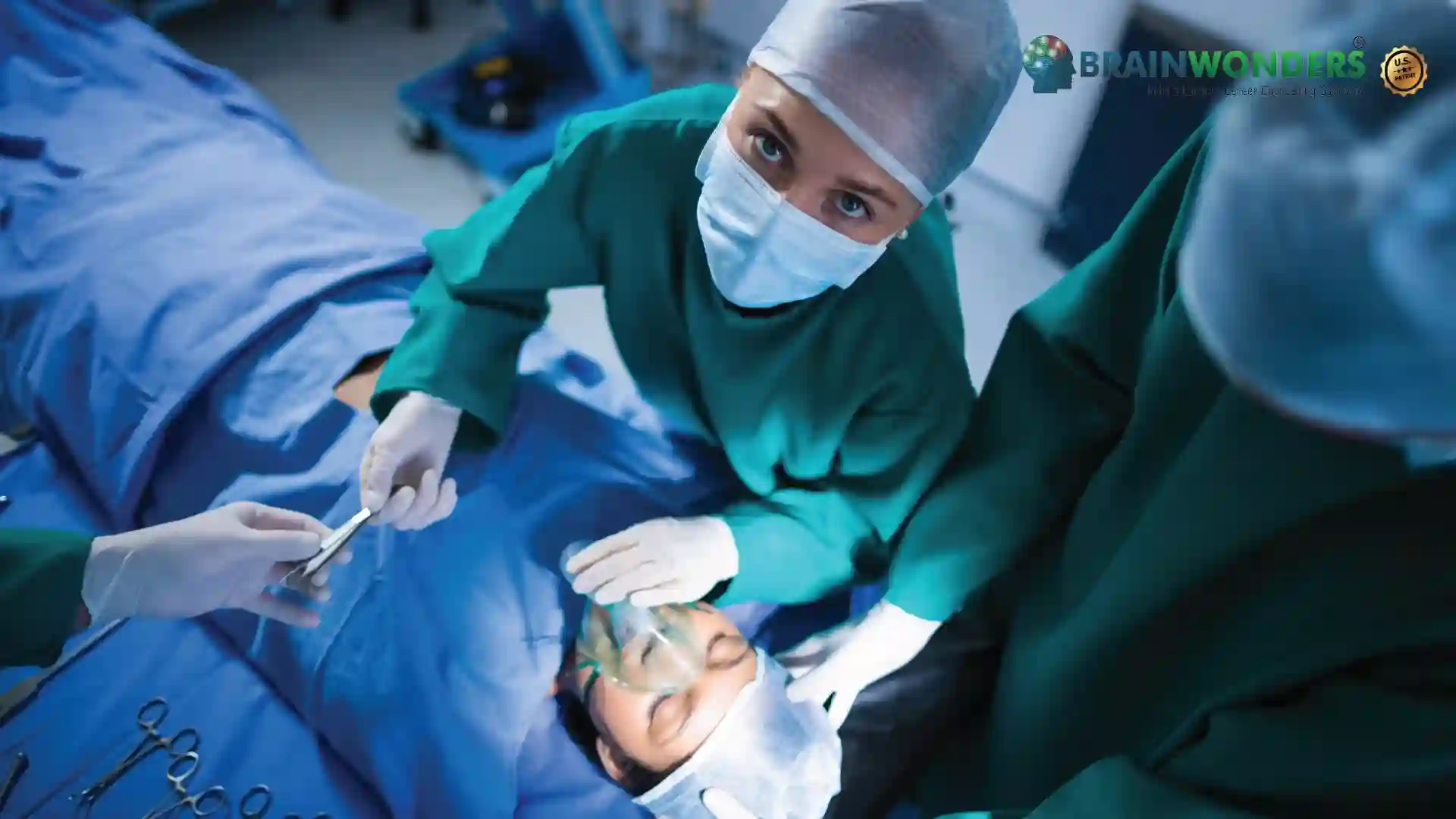How to become a Physical Medicine and Rehabilitation Physician
Overview, Courses, Exam, Colleges, Pathways, Salary

Overview
Who is Physical Medicine and Rehabilitation Physician ?
A physical medicine and rehabilitation physician, also known as a physiatrist, is a medical doctor specialising in diagnosing, treating, and managing patients with physical disabilities, injuries, or conditions that affect their movement, function, and quality of life. Physiatrists are experts in the musculoskeletal, neurological, and medical aspects of physical medicine and rehabilitation. They provide comprehensive medical evaluations, diagnose the underlying causes of impairments or disabilities, and develop personalised treatment plans to address each patient's needs. Physiatrists are crucial in facilitating functional recovery, optimising patient independence, and improving overall well-being.
They utilise a range of interventions, including physical therapy, occupational therapy, medication management, assistive devices, and pain management techniques, to help patients regain mobility, reduce pain, and enhance their ability to perform daily activities. Collaborating with interdisciplinary healthcare teams, physiatrists coordinate and oversee the rehabilitation process, monitor progress, and adjust treatment plans as needed.
They also educate and support patients and their families, empowering them to actively participate in their rehabilitation journey. Physiatrists may engage in research, publish scientific articles, and advocate for policies that promote the well-being and inclusion of individuals with physical disabilities. Physical medicine and rehabilitation physicians are dedicated to improving patients' lives with physical impairments through comprehensive medical care, rehabilitation interventions, and patient-centred approaches.
Typical day at work
What does Physical Medicine and Rehabilitation Physician do?
- Medical Evaluation: Physiatrists perform comprehensive medical evaluations, reviewing patient histories, conducting physical examinations, and utilizing diagnostic tests to assess the nature and extent of physical impairments or disabilities.
- Treatment Planning: Based on their evaluation, physiatrists develop personalized treatment plans that may include therapies, medications, assistive devices, and lifestyle modifications. These plans are designed to optimize patients' function and alleviate pain.
- Rehabilitation Interventions: Physiatrists coordinate rehabilitation interventions such as physical, occupational, and other specialized therapies. They monitor progress and adjust treatment plans to promote functional recovery and independence.
- Pain Management: Physiatrists specialize in managing acute and chronic pain conditions. They employ various techniques, including medication management, interventional procedures, and non-pharmacological approaches, to alleviate pain and improve patient's quality of life.
- Collaborative Care: Physiatrists work closely with interdisciplinary healthcare teams, including physical therapists, occupational therapists, psychologists, and social workers, to provide comprehensive care to patients. They collaborate with other specialists and referring physicians to ensure coordinated and integrated care.
- Patient Education: Physiatrists educate patients and their families about their condition, treatment options, and self-management strategies. They guide exercises, adaptive techniques, and lifestyle modifications to optimize function and promote long-term well-being.
- Research and Advocacy: Physiatrists engage in research to advance the field of physical medicine and rehabilitation. They contribute to scientific literature, participate in clinical trials, and advocate for policies that support the needs of individuals with physical impairments.
Abilities and Aptitude needed
What are the skills, abilities & aptitude needed to become Physical Medicine and Rehabilitation Physician?
- Medical Knowledge: Strong medical knowledge is essential, including a comprehensive understanding of musculoskeletal and neurological systems, joint conditions, and treatments in physical medicine and rehabilitation.
- Diagnostic Skills: Physiatrists need exceptional diagnostic skills to accurately assess patients' conditions, interpret diagnostic tests, and formulate appropriate treatment plans.
- Communication: Effective communication skills are crucial for interacting with patients, colleagues, and interdisciplinary teams. Physiatrists must be able to explain complex medical information clearly and compassionately and actively listen to patients' concerns.
- Interdisciplinary Collaboration: Physiatrists work collaboratively with other healthcare professionals, including physical therapists, occupational therapists, and psychologists. The ability to collaborate, coordinate care, and integrate therapies is essential.
- Critical Thinking and Problem-Solving: Physiatrists must be skilled in analyzing complex patient cases, considering multiple factors, and developing individualized treatment plans. They should be adept at problem-solving and adapting interventions based on patient's needs.
- Empathy and Patient-Centered Care: Physiatrists should possess empathy and compassion as they work closely with patients experiencing pain, disability, or limitations. They should prioritize patient-centered care, considering patients' goals, preferences, and quality of life.
- Manual Dexterity: Some physical medicine and rehabilitation procedures, such as injection techniques or musculoskeletal examinations, require good manual dexterity and fine motor skills.
- Adaptability and Lifelong Learning: Physical medicine and rehabilitation are continually evolving. Physiatrists must stay updated with emerging research, treatment modalities, and technological advancements. They should be adaptable, open to learning, and committed to ongoing professional development.
Salary
Salary for Physical Medicine and Rehabilitation Physician?
Salary of Physical Medicine And Rehabilitation Physician is as follows:
- Minimum Monthly Salary: The minimum monthly salary for an entry-level Physical Medicine and Rehabilitation Physician may vary based on factors such as experience, location, and the type of employer. It could range from INR 50,000 to INR 1,00,000 or more in India.
- Maximum Monthly Salary: Highly experienced and well-qualified PM&R Physicians, particularly those in senior positions, speciality clinics, or with specialized expertise, may earn a monthly salary ranging from INR 1,50,000 to INR 3,00,000 or more.
- Annual Salary: The annual salary for entry-level Physical Medicine and Rehabilitation Physicians could be approximately INR 6 lakhs to INR 12 lakhs per year. Experienced and skilled Physiatrists may earn a maximum yearly salary ranging from INR 18 lakhs to INR 36 lakhs or more.
- Highest-Paying Jobs and Scope: The highest-paying jobs for PM&R Physicians are often found in specialized rehabilitation centres, private hospitals, and academic medical centres. Physiatrists with expertise in specific areas such as spinal cord injuries, sports medicine, pain management, or pediatric rehabilitation may have more lucrative opportunities. The career scope for PM&R Physicians is promising as they play a critical role in helping patients recover from injuries and disabilities, improve functional outcomes, and enhance their overall quality of life. With an ageing population and increased focus on rehabilitation and patient-centred care, the demand for skilled Physiatrists is expected to grow, offering ample career growth and advancement prospects in Physical Medicine and Rehabilitation.
Ready to become a Physical Medicine and Rehabilitation Physician ?
Take the world’s best assessment test !
Take a TestPathways
How to become an Physical Medicine and Rehabilitation Physician?
Entrance Exam
Entrance Exam for Physical Medicine and Rehabilitation Physician ?
Courses
Which course I can pursue?
Best Colleges
Which are the best colleges to attend to become an Physical Medicine and Rehabilitation Physician?
Industries
Which Industries are open for Physical Medicine and Rehabilitation Physician?
- Hospitals and Medical Centers: Physiatrists are commonly employed in hospitals and medical centres, providing inpatient and outpatient rehabilitation services. They work alongside other healthcare professionals to manage patients with various physical impairments or conditions.
- Rehabilitation Centers: Physiatrists can work in specialized rehabilitation centres that provide comprehensive care for individuals recovering from injuries, surgeries, or disabling conditions. These centres may include facilities for physical therapy, occupational therapy, and other rehabilitative services.
- Sports Medicine Clinics: Physiatrists may work in sports medicine clinics, particularly those that cater to athletes and individuals with sports-related injuries. They play a vital role in helping athletes recover from injuries and maximize their performance.
- Academic Institutions: Physiatrists may work in academic institutions, such as medical schools and teaching hospitals, combining their clinical practice with teaching and research responsibilities. They may train medical students, residents, and fellows in physical medicine and rehabilitation.
- Government and Military Healthcare: Physiatrists may find employment opportunities in government healthcare systems or military healthcare facilities. They can provide rehabilitation services to military personnel, veterans, or individuals covered by government health programs.
- Private Practice: Some physiatrists choose to establish their private practices, offering comprehensive rehabilitation services to patients in the community. They may collaborate with other healthcare professionals, such as physical and occupational therapists, to provide holistic care.
- Research and Academia: Physiatrists can pursue careers in research institutions or academic settings, conducting clinical research, contributing to scholarly publications, and advancing the field of physical medicine and rehabilitation.
internship
Are there internships available for Physical Medicine and Rehabilitation Physician?
- Residency Training: Physiatrists complete a residency program after graduating from medical school. This residency training provides hands-on experience and clinical rotations in various aspects of physical medicine and rehabilitation, allowing physicians to develop their skills under the guidance of experienced mentors.
- Fellowship Programs: After completing residency, physiatrists can pursue fellowship programs to gain specialized training in sports medicine, spinal cord injury, traumatic brain injury, pediatric rehabilitation, or pain management. These programs provide additional clinical experience and research opportunities.
- Elective Rotations: Medical schools or residency programs may offer elective rotations in physical medicine and rehabilitation. These rotations allow medical students or residents to spend a designated period in a physiatry department, gaining exposure to the field and working alongside physiatrists.
- Research Opportunities: Physiatrists interested in research can seek internships or positions at research institutions or academic centres. These opportunities allow physicians to engage in research projects, contribute to scholarly publications, and gain insights into research methodologies.
Career outlook
What does the future look like for Physical Medicine and Rehabilitation Physician?
The future for physical medicine and rehabilitation physicians, also known as physiatrists, is promising. With an aging population and increased awareness of the importance of rehabilitation in healthcare, the demand for their expertise is expected to grow. Advancements in technology, research, and treatment modalities will continue to enhance the field, allowing physiatrists to play a vital role in improving patients' functional outcomes and quality of life. Collaborative care models and interdisciplinary approaches will further contribute to the success and impact of physiatrists in the healthcare landscape.




.webp)


